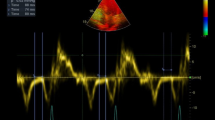Abstract
P-wave correct interpretation may be of main importance. Its morphology and duration may help to increase the ECG sensitivity to diagnose a left ventricular hypertrophy or a diastolic dysfunction. A wide spectrum of cardiovascular and systemic disorders may involve the atria; more recently, the old atrial cardiomyopathy concept has been resumed. An atrial cardiomyopathy may lead to ugly complications such as atrial fibrillation and stroke. Recent clinical data in patients with an implanted cardiac device did show a lack of time correlation between atrial fibrillation and stroke. Thus, atrial fibrillation could be just an epiphenomenon related to abnormal atrial substrate (atrial cardiomyopathy). A recently published meta-analysis (He et al., Stroke 48:2066–72, 2017) has confirmed the association of three left atrial abnormalities easily assessable by means of a surface ECG, namely, increased P-terminal force in the precordial lead V1 (PTFV1) >40 ms mm, prolonged P-wave duration (PWD) >120 ms reflecting interatrial block and greater maximum P-wave area (PWA). Those parameters were associated not only with an increased risk of atrial fibrillation and other supraventricular arrhythmias but also of stroke. Furthermore, in patients with QRS and even repolarization abnormalities, a normal P-wave may be a good sign in favour of pseudo-abnormalities.
Access this chapter
Tax calculation will be finalised at checkout
Purchases are for personal use only
Similar content being viewed by others
References
Obbiassi M, Secchi MB, Mariotti G, et al. P wave analysis for the electrocardiographic diagnosis of left ventricular hypertrophy. A study of a population with arterial hypertension. G Ital Cardiol. 1979;9(10):1118–25.
Okin PM, Gerdts E, Wachtell K, et al. Relationship of left atrial enlargement to persistence or development of ECG left ventricular hypertrophy in hypertensive patients: implications for the development of new atrial fibrillation. J Hypertens. 2010;28(7):1534–40.
Nagle RE, Smith B, Williams DO. Familial atrial cardiomyopathy with heart block. Br Heart J. 1972;34:205.
Capucci A, Bracchetti D, Magnani B. Permanent atrial paralysis: clinical and instrumental study of a case. Boll Soc Ital Cardiol. 1977;22(1):45–9.
Zipes DP. Atrial fibrillation. A tachycardia induced atrial cardiomyopathy. Circulation. 1997;95:562–4.
Goette A, Kalman JM, Aguinaga L, et al. EHRA/HRS/APHRS/SOLAECE expert consensus on atrial cardiomyopathies: definition, characterisation, and clinical implication. J Arrhythm. 2016;32(4):247–78.
Lip GYH, Halperin J. Improving stroke risk stratification in atrial fibrillation. Am J Med. 2010;123:484–8.
Brambatti M, Connolly SJ, Gold MR, ASSERT Investigators, et al. Temporal relationship between subclinical atrial fibrillation and embolic events. Circulation. 2014;129:2094–9.
Kamel H, Okin PM, Elkind MS, et al. Atrial fibrillation and mechanisms of stroke: time for a new model. Stroke. 2016;47(3):895–900.
Puech P. L’activite´ electrique auriculaire normale et pathologuique. Paris: Masson; 1956. p. 206.
Chhabra L, Devadoss R, Chaubey VK, et al. Interatrial block in the modern era. Curr Cardiol Rev. 2014;10:181–9.
Baye’s de Luna A, Cladellas M, Oter R, et al. Interatrial conduction block and retrograde activation of the left atrium and paroxysmal supraventricular tachyarrhythmia. Eur Heart J. 1988;9:1112–8.
Castillo P, Vernant P. Troubles de la conduction interauriculaire par bloc du faisceau de Bachmann. Arch Mal Coeur. 1971;64:1490.
Bacharova L, Wagner GS. The time for naming the interatrial block syndrome: Bayes syndrome. J Electrocardiol. 2015;48:133–4.
Ariyarajah V, Puri P, Apiyasawat S, et al. Interatrial block: a novel risk factor for embolic stroke? Ann Noninvasive Electrocardiol. 2007;12:15–20.
He J, Tse G, Korantzopoulos P, et al. P-wave indices and risk of ischemic stroke a systematic review and meta-analysis. Stroke. 2017;48:2066–72.
Guichard JB, Nattel S. Atrial cardiomyopathy: a useful notion in cardiac disease management or a passing fad? J Am Coll Cardiol. 2017;70(6):756–65.
Blanche C, et al. Value of P-wave signal averaging to predict atrial fibrillation recurrences after pulmonary vein isolation. Europace. 2013;15(2):198–204.
Steinberg SA, Guidera JS. The signal-averaged P wave duration: a rapid and noninvasive marker of risk of atrial fibrillation. J Am Coll Cardiol. 1993;21:1645–51.
Budeus M, et al. Detection of atrial late potentials with P wave signal-averaged electrocardiogram among patients with paroxysmal atrial fibrillation. Z Kardiol. 2003;92(5):362–9.
Maolo A, Contadini D. Difficult interpretation of ECG: small clues may make the difference. The role of the P-wave. In: Capucci A, editor. Clinical cases in cardiology. Cham: Springer; 2015.
Gatzoulis MA, Munk MD, Merchant N, et al. Isolated congenital absence of the pericardium: clinical presentation, diagnosis, and management. Ann Thorac Surg. 2000;69:1209–15.
Abbas AE, Appleton CP, Liu PT, et al. Congenital absence of the pericardium: case presentation and review of literature. Int J Cardiol. 2005;98(1):21–5.
Connolly HM, Click RL, Schattenberg TT, et al. Congenital absence of the pericardium: echocardiography as a diagnostic tool. J Am Soc Echocardiogr. 1995;8:87–92.
Salem DN, Hymanson AS, Isner JM, et al. Congenital pericardial defect diagnosed by computed tomography. Catheter Cardiovasc Diagn. 1985;11:75–9.
Shiavone W. Congenital absence of the left position of parietal pericardium demonstrated by nuclear magnetic resonance imaging. Am J Cardiol. 1985;55:1439.
Rais-Bahrami K, Granholm T, Short BL, et al. Absence of pericardium in an infant with congenital diaphragmatic hernia. Am J Perinatol. 1995;12:172–3.
Spodik D. Congenital abnormalities of the pericardium. The pericardium: a comprehensive review. 1st ed. New York: Marcel Dekker; 1997. p. 65–75.
Author information
Authors and Affiliations
Editor information
Editors and Affiliations
Rights and permissions
Copyright information
© 2019 Springer Nature Switzerland AG
About this chapter
Cite this chapter
Beltrame, M., Compagnucci, P., Maolo, A. (2019). P-Waves Are the Main Clues for Correct ECG Interpretation. In: Capucci, A. (eds) New Concepts in ECG Interpretation. Springer, Cham. https://doi.org/10.1007/978-3-319-91677-4_1
Download citation
DOI: https://doi.org/10.1007/978-3-319-91677-4_1
Published:
Publisher Name: Springer, Cham
Print ISBN: 978-3-319-91676-7
Online ISBN: 978-3-319-91677-4
eBook Packages: MedicineMedicine (R0)




